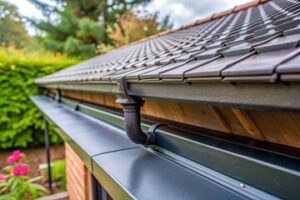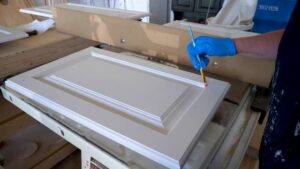Construction is the perfect career for people who want a sense of purpose from their work. Each employee defines meaning differently, but growth opportunities and autonomy are common themes that add to job satisfaction.
Additionally, many craft professionals enter the field without formal education and can start earning a paycheck right away. This is a great way to dodge student debt. Checkout https://www.cleanstoneconstruction.com/ for more information.

Construction is a significant part of industrial culture, producing a built environment to serve the needs of society. It also demonstrates a level of mastery over natural forces that can produce an impressive variety of structures.
The first two hours are a foundation call to clarify your’something’, then six hour-long calls (every other week) to name tangible markers along the way of your process, get accountability for each step, and map your way through the creative mystery.
Working with a Team
As any construction worker knows, teamwork is essential to the success of a project. Without strong collaboration, projects can take longer to complete, and the quality of the work can suffer. There are a few key ways to promote teamwork on construction sites.
Teamwork starts with selecting the right people for the job. The right team members must have the requisite skill sets to complete their jobs, and they should be compatible with each other. A team that contains rivals or resentful individuals can be a real problem on a construction site, leading to a loss of productivity and an inability to address issues.
It’s also important to give team leaders the freedom to delegate tasks as needed. Good team leaders should be able to recognize and promote potential leaders within their teams, and they should be able to handle conflicts effectively. In addition, good team leaders will be able to communicate schedules clearly, which will help everyone stay on track with their assignments.
Effective communication is also essential to teamwork on construction projects. Having clear lines of communication will help employees resolve issues quickly, which will lead to higher levels of productivity and better-quality work. It’s also helpful to provide an open-door policy that encourages workers to speak up when they have questions or concerns.
Another way to improve communication is to schedule meetings regularly, and make them as productive as possible. Meetings that waste time or are poorly structured can cause frustration and can prevent people from getting the work done that they need to do. Having meetings with clear agendas and goals will make the most of everyone’s time and ensure that all stakeholders are on the same page.
Strong teamwork in construction also depends on having a leader that’s available and willing to listen to problems. Construction is often fast-paced, so it’s important to have a leader that can respond to problems quickly and find solutions. In many cases, this will mean that a leader will need to step in and take control of certain aspects of the project when necessary.
Getting Started
Construction is an exciting industry to work in, and if you’re looking for a career with a manageable barrier to entry, it can be the right choice. You can choose to enroll in a vocational training program or apprenticeship that will combine on-the-job experience with classroom learning. This may take longer than a traditional college program, but it can save you on student debt and get you into the workforce much sooner.
If you’re still unsure of the right path, you can try attending local job fairs and talk to people working in various positions within the sector. Many of them will be more than happy to provide insight on the different careers and how they work.
You can also contact companies directly and ask if you can visit a job site. This will give you a real-world feel for the industry and help you determine if it’s what you’re really looking for. It’s also a great way to meet other professionals who work in the field and build up your network.
Once you’ve discovered what part of the industry interests you, pick a specialty. For example, you might decide to focus on carpentry or electrical work. Then, research the specifics of those specialties so you can familiarize yourself with what the job entails. You can even use an online resource like the Career Finder to find out more about the different roles available.
It’s important to understand how your business will be regulated and what you will need in order to operate legally. This will include registrations, permits, insurance and other regulatory requirements. It’s also crucial to ensure that you have the right equipment and tools. In some cases, you may need to invest in specialized machinery that can handle certain types of projects.
It’s a good idea to consult with legal and financial advisors before you make any major decisions regarding your business. They can also advise you on how to market your services and what sort of financing options are available. If you’re going to be working in the field, consider investing in unified systems that will allow you to communicate with your team and clients easily. This will make it easier to record incidents on site, as well as ensure compliance with health and safety regulations.
Taking Pride in Your Work
Pride is a big part of what makes any job meaningful. Being able to take pride in your work is something everyone can strive for no matter what they do or how far they are in their career. The way to do it is by knowing your job well enough so that you can be confident in what you do. You can do this by constantly learning what you need to know and working hard at it. Taking pride in your work also means not being afraid to challenge the status quo, but doing so in a way that works for the company and for its clients.
Whether you’re a supervisor or a janitor, your job matters and you should be proud of it. Being proud is not about being conceited or thinking you’re better than anyone else, but it’s about having a strong work ethic and knowing that whatever you do will be quality. Even if it’s polishing turds, you should do it well because your reputation is on the line.
When people take pride in their work, they’re a joy to be around. You can see it in their faces, the way they approach tasks, and how they work with others. It’s about being a team player, putting in the time and effort to meet deadlines, and not settling for less than perfection.
There are many ways to show pride in your work, from being friendly and courteous to bringing your best every day. It’s about not blaming others for mistakes, staying back after events to ensure everything has been cleaned up, and asking for feedback so you can improve your performance. Pride in your work can be infectious, and when others see it, they will want to do the same.
Construction is a vital industry that builds real things that help people, connects communities, and improves society. It provides jobs and creates opportunities for growth and advancement. It is also a great source of innovation as new technology and materials are used to make processes more efficient. In addition, sustainability is an important issue and there are many roles in the field that focus on this.






